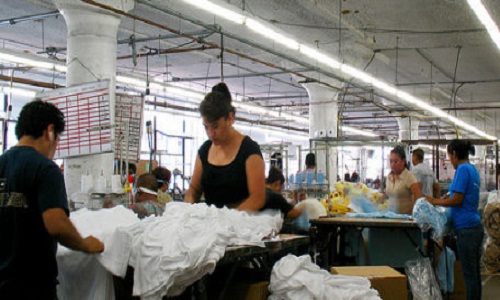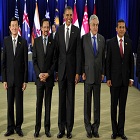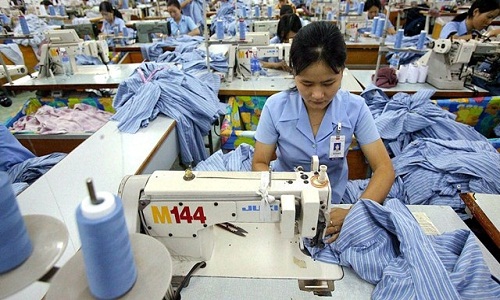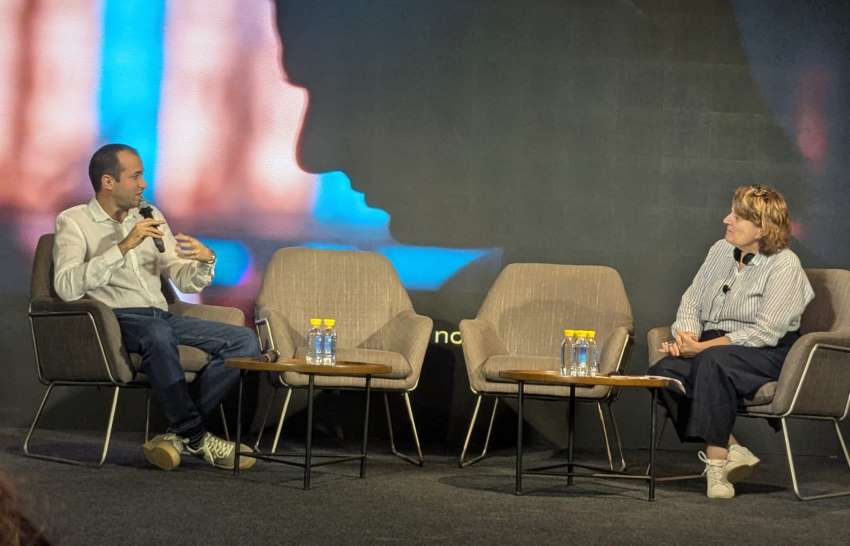FW
Bangladesh will reduce the rate of tax at source for readymade garment exporters to 0.60 per cent from the proposed 1.50 per cent.The tax rate for jute product exporters may also be set at 0.60 per cent, considering the prospects of the industry. The finance bill 2016 is also set to bring a relief for individual taxpayers as it may raise the income tax rebate on investment in some specific sectors by individuals to 25 per cent from the proposed 20 per cent for the upcoming financial year ’16-’17.
There may also be a reduction in the amount of value added tax to be paid by VAT payers for legal action against assessment of revenue authorities during filing of appeals.
With the FY ’17 Budget, the proposal is that VAT payers have to deposit 50 per cent of the disputed VAT or penalty before making an appeal against the assessment or decisions of field-level VAT officials. Another 50 per cent of the disputed VAT will be required in filling an appeal against the decision of the appeal commissioner.
Currently VAT payers need to pay only 10 per cent of the disputed amount at each stage of appeal.
Major worldwide markets such as the US, China, Japan, India, Canada, Australia and New Zealand are likely to lose interest in the EU, if the full exit of UK from the EU goes ahead. The loss of interest by major markets will be because very few of the people in these countries know any European language, except English.
After Brexit, Ireland will be the only English speaking country left in the EU. This will likely result in a large inflow of EU migrants into Ireland as most EU citizens have English as their second language (very few EU citizens know French, German or other European languages).
For many EU citizens, the possibility of going to the UK without restriction was the cherry on the cake as it was an English speaking country with a good social welfare system and offered a route to other English speaking countries such as the US and Australia through work transfers. However, with Brexit, this facility will go away.
UK's exit will also have its impact on Turkey's plan of joining the EU, which is less likely to materialise now. Holland and Ireland are likely to be the next countries to leave the EU within five years.
Wool manufacturer Botto Giuseppe from Italy has become the prime reference for the Fair Cashmere project set up by US fashion label Maiyet. The raw materials comes from Mongolia, the world's second largest producer of this fiber, and it is environmentally and ethically sustainable.
Maiyet is a US luxury fashion label specialising in rare artisanal products from all over the world. Based in New York, Maiyet buys cashmere directly at source, with no intermediaries. Supporting local goat farmers from the Gobi desert in Mongolia, and improving their quality of life through tangible contributions, are among Maiyet’s objectives. The company also looks after goat vaccination and disinfection.
Fair Cashmere is cradle to cradle certified at the bronze level and is awaiting its gold certification. Cradle to cradle is a rigorous certification system for products that are innovative across their entire supply chain. It tests the process through five criteria to evaluate a product's sustainable development level: waste, health, energy consumption, water resources (in terms of use and pollution) and human resources use.
Since 1876 Botto Giuseppe has been a manufacturer of fine fabrics and yarns. Over the years, it has added jersey and knitwear yarns to its range, and is now a vertically integrated producer from yarns to finished products.
ITMA ASIA + CITME 2016 will be held in China from October 21 to 25, 2016. The fifth edition of the combined textile machinery show is expected to attract a lakh of visitors from around the world. The combined show is now well-entrenched in the textile machinery exhibition calendar. It draws all leading textile and garment manufacturers and is an essential showcase for the Asian market, offering plenty of business and networking opportunities.
Organisers are forging partnerships with leading industry associations and buyer groups from key industry segments and establishing rapport with important textile and garment manufacturing countries. Strategic tie-ups have already been formed with many of the world’s textile associations, including those in Bangladesh, India, Indonesia, Japan, Korea, Malaysia, Pakistan, Taiwan, Thailand, Turkey and Vietnam. On the domestic front, the organisers are reaching out to Chinese buyers in all the key textile hubs.
Interest from the global textile and garment industry for the event is extremely strong. So far it has attracted around 1,600 exhibitors from 27 countries. The last ITMA ASIA + CITME show in 2014 grossed 1,50,000 square meters. It welcomed around 1,600 exhibitors from 28 countries. The show attracted around 1,00,000 visitors from 102 economies.
The Centre has promised to make funds available to Arunachal Pradesh to facilitate establishment of a textile park in the state. Union textile minister Santosh Kumar Gangwar gave this assurance to the State Deputy Chief Minister Kameng Dolo yesterday. Stating that the state government would be informed as and when the proposal would be cleared by the ministry, the minister asked the State government to submit a detailed project report (DPR) at the earliest.
Gangwar also informed that he would be visiting the state next month to inaugurate a garment manufacturing unit at Pasighat in East Siang district. During his visit, the union minister said, he would announce some developmental packages for the state in the textile and handloom sectors. During the meeting, Dolo, who also holds the Textile and Handicrafts portfolio, expressed the State’s willingness to establish weaver service centre in Itanagar so that poor weavers of Arunachal are benefited. At present, the Weaver Service Centre at Guwahati has been providing services to the state. Manipur and Nagaland too have such centres.
The deputy CM said permission for single brand under 'Make in India' program has been obtained from the IKEA, a Sweden-based company, for bamboo products. Dolo also urged the Union minister to clear all the pending proposals lying with the ministry. In his reply, Gangwar said the ministry would release the second instalment under North Eastern Textile Promotion Schemes shortly after completing the required formalities.
The exit of Great Britain from the European Union after a referendum will have marginal impact on the export of India’s fibres and yarns to that destination as it is now emerges to be a big buyer. While the entire West Europe accounted for less than 7 per cent of the total fibre and yarn exports in 2015-16, UK was just 0.2 per cent. Interestingly, Europe makes up for 46 per cent of apparel exports of which Britain's share is 40 per cent.
In the last financial year, UK imported $14.7 million worth of fibres (natural and manmade) and spun yarns including filaments. This included $8.13 million of spun yarns, $3.44 million of filament yarns and $3.15 million worth of fibres. During the year, it imported cotton yarn, polyester/wool, polyester yarn and acrylic yarn, each worth more than $1 million. As far as fibres is concerned, UK imported PSF and VSF during the year. Even International Textile Machinery Exhibitions (ITME) Society, the textile machinery manufacturers’ body of India does not see any immediate threat from Brexit.
According to Sanjiv Lathia, Chairman of the ITME, England is not a big buyer of textile machinery. Textile manufacturing moved away from England long ago to China. He also does not foresee much of an impact on Indian textile machinery manufacturing. However, garment exporters are a worried lot. Post separation, they want a trade treaty with Britain. EU is a major destination for readymade garments with the UK a leading market.
A free trade agreement (FTA) will be important to boost garment exports to the UK. Knitwear exporters, who are also pitching for FTA with the EU, also want a separate pact with Britain. India currently enjoys a 12.per cent tariff preference in the EU under its Generalised Scheme of Preferences programme. Although Europe is a large market for India, it is more or less saturated now. But high valued added products will, in all probability, be picked up in the coming years. Recently, with an aim to create 10 million textile jobs within three years, the government had approved a INR 6,000 crore special package for the textiles and apparel sectors.
India’s apparel exports are likely to decline by five per cent during the first quarter of the financial year due to the ongoing global economic slowdown and the uncertainty over recovery in the months to come. The peak summer demand season didn’t go as expected. For the first time in many years, sentiment for the domestic apparel sector also remained weak. So domestic sales are expected to see flat to marginal growth in the June quarter.
Britain's vote to exit the European Union is unlikely to affect India's apparel exports in the near term though there could be some impact in the long term. There are two years to go for the actual exit from the date of formal announcement and that may give time for things to settle.
Europe took 37 per cent of India’s $16.5 billion apparel exports, with the UK taking 42 per cent of Europe’s contribution. The Rs 2,50,000 crores domestic apparel industry in India, in addition to the Rs 1,11,500 crores exports, is dominated by the unorganised sector, which has nearly 70 per cent contribution. Apparel exports were $4 billion in the June quarter of 2015. For all of 2015-16, it was $16.5 billion.
Less than a week after the Central government announced radical changes in the labour laws and offered a Rs 6,000 crores package to the garments sector as many as 38 garment exporters including 13 small and medium enterprises with a turnover of under Rs 5 crore each have pledged to hire 37,720 more people and invest Rs 710 crores over one to three years, according to a list prepared by the Apparel Export Promotion Council (AEPC) and exporters.
Sudhir Dhingra, Chairman, Orient Craft, has said his company will add 4,000 jobs to its existing workforce of 32,000 over the next three years. He also added that apart from replacing a small unit in Noida with a bigger one, his outfit will set up one more facility in the city. Another exporter Richa Global said that the company will add 3,000 people within a year to its existing employee base of 11,000 people. Texport chairman, Virender Uppal says his company intends to hire 4,500 people over the next three years. This, he said would result in a sharp increase over the current workforce of 1,000 people.
The number of exporters willing to create jobs is rising, as many of them are waiting to go through fine prints of the policy so as to get to the bottom of the package announced, according says Ashok G Rajani, the chairman of AEPC. Also the chairman of Midas Touch Exports, Rajani has pledged to invest Rs 75 crores and hire 650 people in response to the package. This is important, as roughly 80 per cent of the labour-intensive garment sector is dominated by small-scale industries. Overall, the companies have pledged to hire people in the range of 50-4,500.
At present, close to 32 million people are employed in the textiles and garments sector which is the largest job provider after agriculture and accounts for roughly 15 per cent of the country’s exports. The country’s textile and garment exports stood almost flat at $40 billion in the last fiscal with clothing accounting for $17 billion.
"Brexit decision sent stocks tumbling the next day. It led to a fall of 3.6 per cent in the S&P 500 and a drop of 3.4 per cent in the Dow Jones index on June 24. The S&P 500 Apparel and Accessories Index, which is a seven-company index based on Ralph Lauren, Hanesbrands, VF, Coach, PVH, Michael Kors, and Under Armour, erased YTD (year-to-date) gains and fell 5.4 per cent on the day following the Brexit announcement."

Brexit decision sent stocks tumbling the next day. It led to a fall of 3.6 per cent in the S&P 500 and a drop of 3.4 per cent in the Dow Jones index on June 24. The S&P 500 Apparel and Accessories Index, which is a seven-company index based on Ralph Lauren, Hanesbrands, VF, Coach, PVH, Michael Kors, and Under Armour, erased YTD (year-to-date) gains and fell 5.4 per cent on the day following the Brexit announcement.
Meanwhile, the Consumer Discretionary Select Sector SPDR Fund, which invests 6.7 per cent of its portfolio in apparel stocks, fell 3.7 per cent as compared to the previous closing price.
Apparel and accessory stocks slammed

Brexit led to a tumble in apparel and accessories stocks. PVH was clearly the worst hit, while most apparel and fashion stocks were in the red after the Brexit vote. The stock fell 8.9 per cent after the company reported that it generated 3 per cent of its revenues from the UK markets. Other major losers in the apparel sector were: Ralph Lauren (-7.9 per cent), Michael Kors (-6.3 per cent), VF (-5.7 per cent), and Coach (-4.8 per cent).
Brexit resulted in the S&P 500 Apparel and Accessories Index falling 5.4 per cent the next day. All seven companies included in the index, viz. PVH, Ralph Lauren, Hanesbrands, VF, Coach, Michael Kors, and Under Armour registered a fall in their stock prices.
PVH stocks saw a fall after the company announced their UK revenues constitute 3 per cent of total revenues. PVH derives around 45 per cent of its revenues from international markets (i.e., outside North America). The company has the highest international exposure of its peer group. Its competitors VFC, Ralph Lauren, Kate Spade, and Michael Kors derived 37 per cent, 34 per cent, 19 per cent, and 22 per cent of their respective revenues from international markets in their last fiscal years. PVH’s top line has been bearing the brunt of a stronger dollar for some time now. Brexit might further strengthen the US dollar and add to the company’s woes. However, since only 3 per cent of the company’s revenues are derived from the UK, the impact might be limited and short-lived.
PVH outshines peers
PVH has been one of the best performers in the apparel and fashion segment. The stock had gained 40 per cent in value YTD (year-to-date), as of June 23, prior to the Brexit vote. This is an incredible performance, particularly when compared to competitors Ralph Lauren, Hanesbrands, and Under Armour, which have fallen 10 per cent, 13 per cent, and 7 per cent, respectively, on an YTD basis.
The company’s solid financial performance has driven its stock price in the past. PVH has topped Wall Street earnings estimates for eight consecutive quarters. It registered a 33 per cent increase in EPS (earnings per share) on a constant-currency basis in its last reported quarter. Including the exchange rate impact, EPS remained flat during the quarter. While PVH’s stock plummeted after the Brexit announcement, in comparison, the S&P 500 Apparel and Accessories Index has risen just 0.3 per cent YTD as of June 24.
Analysts feel UK’s decision to leave the EU is unlikely to have a significant impact on US markets. As a UBS analysts feels the ‘Leave’ vote may weigh on sentiment in the near term, it is unlikely to result in a change in the fundamental outlook for US equities. They say, Brexit will be short-term noise amid improving intermediate indicators which signal the risk remains to the upside for US stocks. Some, Wall Street analysts are positive about PVH Corp and see potential for the stock to return to its pre-Brexit level.
"Though the Trans-Pacific Partnership (TPP) Agreement has come into effect having been signed on 4 February this year, few Vietnamese businesses have plans to switch from subcontracting to direct exports or reduce their heavy reliance on feedstock imports or increase exports of processed goods to improve value addition. This has caused fears that Vietnam is unlikely to derive the maximum benefit from the trade pact. "

Though the Trans-Pacific Partnership (TPP) Agreement has come into effect having been signed on 4 February this year, few Vietnamese businesses have plans to switch from subcontracting to direct exports or reduce their heavy reliance on feedstock imports or increase exports of processed goods to improve value addition. This has caused fears that Vietnam is unlikely to derive the maximum benefit from the trade pact.
Survey finds few willing to change production mode
A survey of 1,500 enterprises by the Vietnam Chamber of Commerce and Industry (VCCI) in April last found that only 11.6 per cent plan to change their production mode in the next three years to improve value addition, Nguyen Thi Thu Trang, head of the VCCI’s WTO Center, is reported to have said.

Vietnamese firms are not involved in the value chains of many products and merely do outsourcing for foreign partners. They import most feedstock for production for exports and now the TPP’s strict rules on origin will be a hurdle.
Yarn-forward rule coming
Import taxes, in many large economies like the US, Canada, Australia and Japan, the biggest buyers of Vietnamese textiles, will be cut from 17-32 per cent to zero. But there will be a "yarn-forward rule" stating that every piece of thread, button and zipper in a garment will have to come from TPP signatories to qualify for the tariff exemptions.
But most of Vietnam's yarn and components are sourced from China and South Korea, both non-TPP countries, making much of Vietnam's products ineligible for the exemptions. “I do not think there will be many changes to us after the TPP comes into effect; we will continue to implement outsourcing contracts,” Luong Van Thu, director of a garment firm in the northern Hung Yen Province, reportedly observed.
However, Vietnamese garment manufacturers can do little since they lack the financial strength to invest in their own yarn and textile facilities. A garment company requires an investment of millions of dollars which increases to billions of dollars for a textile and dying firm, industry insiders felt.












